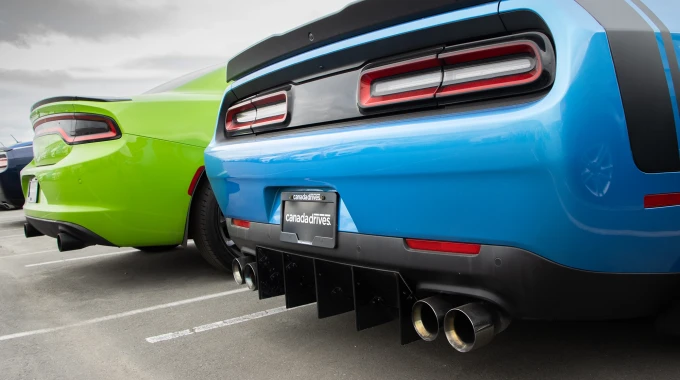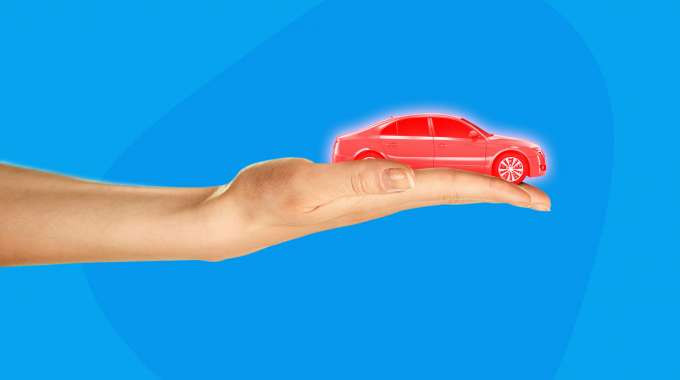
How to Sell a Financed Car
Selling your car is typically no walk in the park. Selling a car that still has a loan on it adds a bit more complexity to the endeavour. However, that doesn't mean it can't be done.
There are plenty of reasons why someone might want to sell a financed car.
Maybe your driving needs have changed and you no longer need a car. Maybe your financial situation has changed and you no longer want a car, or can no longer afford the monthly payment. Maybe you want to trade in for something bigger with more room for passengers and storage. Maybe you want something smaller and more fuel-efficient to help save some cash at the pump. Whatever your reasons, you have options when it comes to selling a car that still carries a loan.
Yes, you can sell a financed car, but if you plan to sell privately, you need to figure out how to pay off the remaining loan balance before transferring ownership. Or, you can work with a company that will take care of it for you.
Where can you sell your financed car?
You essentially have three options of where you can sell a financed car: private sale, online retailer, or dealership.
Sell it privately
Some people enjoy going through the steps of selling a car privately. Doing the listings, DIY marketing, organizing repairs and touch-ups, meeting potential buyers, getting the required paperwork in order, and sitting through test drives is worth the effort if they can get top dollar for their old car. Others might cringe at the prospect of all that work and effort, even if it might mean getting a higher value for their car. However, the truth remains that it is the best way to maximize a price return for your car; even when it comes to selling a financed car.
However, finding a buyer to purchase a car with a loan still outstanding on it will be challenging. Most buyers are looking for a safe-and-seamless buying experience in the private marketplace and they typically don’t want the complications that come with buying a financed car. A buyer usually wants a clean title before agreeing to become the new owner of the vehicle, which means you’ll need to figure out a way to clear the loan before you transfer the title. Remember, a lender stakes a claim to the car’s title while a loan is outstanding, so that lender will need to be repaid in full in order to release its lien.
Another drawback to a private sale is that it eliminates the convenience of trading in your car. And this could be your ultimate reason for wanting to sell a financed car – to upgrade your vehicle. That brings us to online retailers and dealerships.
Sell (or trade) with an online retailer
Online retailers have emerged as a legitimate option when you want to sell your car quickly and for a fair amount. These companies are essentially dealerships with no physical showrooms; everything happens 100% online.
Online retailers offer incredible convenience with all the machinations in place to handle the purchase of a financed vehicle, including trade-in scenarios. An online retailer will make an offer for your car based on a few details that you provide online. If you have an outstanding car loan, the retailer can work with your lender to pay the balance and send you the remaining cash.
But what’s even more noteworthy: an online retailer can typically offer you more money than a traditional dealership. But how?
Most online retailers, like Canada Drives, operate nationally, buying thousands of cars from customers across the country. With a digital-first presence, online retailers can cast a wider net in terms of market reach. Therefore, the business model of an online retailer is to buy at scale, which means you can skip the low-ball, nickel-and-dime tactics that you might expect with some traditional dealerships.
If you’re curious about how much your car is worth you can simply fill out an online appraisal form here. You’ll get an instant offer for your vehicle. If you like the offer you can drop off your car at a Canada Drives location near you and you’ll get paid via e-transfer.
Trade in at a dealership
Traditional dealerships don’t actively seek to buy vehicles from the general public, but if you’re in the market to buy a new car, most dealerships accept trade-ins. Your dealer will appraise your current car and tell you what they think it is worth. If you accept their offer, this dollar amount will go towards the price of your next car purchase. Your dealer will know how to build any outstanding loan balance into your next car loan.
But keep in mind, if you are looking to trade in, you can expect an offer for your car that’s typically a bit lower than its true market value because car dealers tend to factor in how much it will cost them to recondition and resell your car, they also need to make at least some profit when they sell used trad-ins on their lot. Always make sure you’re getting a fair offer by checking your own car’s value.
How to sell a financed car without paying it off
When you sell a financed car privately, you’ll need to figure out how to pay off the loan before you sell. But if you sell to Canada Drives, we will pay off the loan and you will get the difference.
Skip the hassle of selling your car privately and get an instant online offer from Canada Drives today — even if you still owe money on your car loan. Simply enter a few details online to see what your car is worth.
Is it a good idea to sell a financed car?
Selling a car that you still owe money on certainly adds an additional wrinkle to what can often be a somewhat complex process. Perhaps the best determining factor of whether you should move forward with selling your financed car is whether you have positive or negative equity in the vehicle.
Before determining whether you have positive or negative equity in your car, you’ll need to ask your lender for a “payoff amount,” a statement detailing the remaining balance on your auto loan, and what it will cost you to own the car outright.
The next piece of information you will need is a fair market valuation for your vehicle – what is the car worth. CARFAX’s Value Range Estimator, Kelley’s Blue Book, and Canadian Black Book are reputable resources for finding an accurate valuation on your used vehicle.
As an online retailer that buys cars across the country, Canada Drives uses Canadian Black Book values to provide an estimate of your car's worth in a couple of minutes. But our simple online tool offers even more convenience than that. If you like the value of the estimate you can choose to sell your car directly to Canada Drives. All you need to do is drop off your car and you'll get paid. We'll even pay off your existing loan and you will get the difference.
What is positive equity in a car?
When you have positive equity in a car, it means the vehicle is currently worth more than you owe. To find out if you have positive equity, subtract the payoff amount (remaining balance) on your car loan from the value of your vehicle, as determined by a third party like Canadian Black Book. If the result is positive, you have positive equity. For example, if you discover that your car’s value is $10,000 and you have a payoff amount of $7,000 on your car loan, you have positive equity.
Positive equity will make the process of selling or trading your car go smoother. For example, the dealer will pay off the outstanding balance to your lender and give you whatever funds remain ($3,000) or put it directly towards your trade-in purchase.
Positive Equity
When the Car's Value is greater than the Payoff Amount
What is negative equity in a car?
When you have negative equity in a car, it means the vehicle is currently worth less than you owe. To find out if you have negative equity, subtract the amount owed on your loan from the value of your vehicle, as determined by a third party like Canadian Blackbook. If the result is negative, you have negative equity.
This is commonly called being “upside down” or “under water” on a car loan. This complicates the process of selling the financed car somewhat, as you owe more than your car is worth. In this situation, a dealer might pay off a lender and build the cost into a new car loan for you. That means you will be transferring debt from your old vehicle to your new one. Another situation would be to pay off the difference between a dealership’s offer and your loan.
Here’s an example of negative equity: Let’s say you have a payoff amount of $15,000 and you determine your car is worth about $13,000, according to current market valuations. That means you have $2,000 in negative equity. To satisfy the lien holder, you will need to come up with an extra $2,000 to pay off the car loan in full.
Negative Equity
When the Payoff Amount is greater than the Car's Value
4 steps for selling a financed car privately
Here’s a step-by-step guide explaining the best practices for selling a financed car.
- Find out what your car is worth: The first step is to get an accurate market valuation for your vehicle. We already mentioned the industry leaders for used vehicle valuations in Canada – Canadian Black Book, CARFAX’s Value Range Estimator, Kelley’s Blue Book. This information will help you understand how much your car is worth. You could also try scanning the dealership listings and private listings for similar vehicles to yours and see what price other sellers are asking.
- Determine the payoff amount: By discovering the amount owing on your vehicle loan, you will be able to determine if you have positive or negative equity in the car. To find out how much you owe, you simply need to obtain a “payoff amount,” or sometimes called a “payoff letter” or “payoff balance” from your lender. This is how much it will cost you to own the car outright. This statement is easy to obtain either online or with a phone call.
- Pay off the car loan: If you can pay off your car loan before a sale it will make the sale process much simpler, as well as provide you with more selling options. With a clear title, you can look for the highest returns in the private marketplace (or ask for better trade-in value at a dealership). If you don't have the savings to pay off the remaining loan balance, one route you can take to get a clear title is by applying for a low-interest personal loan (or credit card). With these funds, you can pay off the lienholder and sell the car. Then, use the proceeds from the sale to pay off the low-interest debt.
- Prove to the buyer that you paid off the loan: It's much easier to find a buyer for a car without a lien, but you might be able to find a buyer with the car loan still outstanding under the assumption you will use the sale proceeds to immediately pay off the lien. Regardless, you will need to show the buyer documentation after completion of the sale. You can get a copy of your vehicle’s history report from a company like CARFAX. The report will show no outstanding liens to the vehicle. There are also provincial vehicle reports that provide the same documentation. For example, Ontario offers UVIPs (Used Vehicle Information Report) for a small fee.







